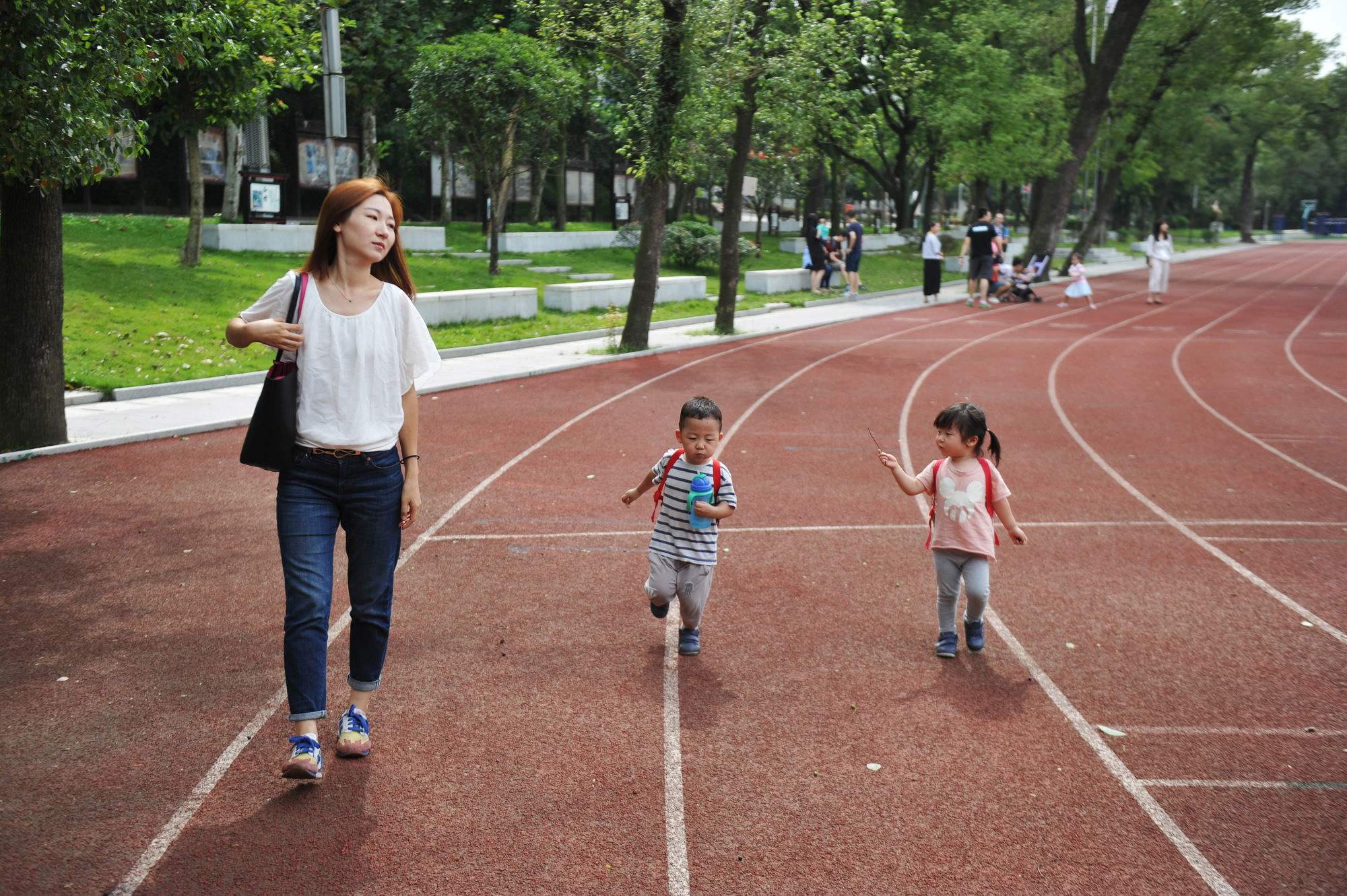The lack of comprehensive healthcare for the elderly is just one of many social problems in an aging Chinese society. Low fertility and a labor shortage have also prompted China to launch a new family planning policy. All couples may now have two children. But the number of births last year was less than expected. CGTN’s Tang Bo looks into the reasons.
For Qi Yanxia, a government functionary, having a second child used to be a big no. But in less than a month, Qi is going to give birth to her second child.
Qi Yanxia and her husband are just one example of many couples for whom a second child is a dream come true. But according to a survey of 10,000 families by the All-China Women’s Federation, more than 50 percent don’t want one. Why is it so? And more importantly, is the new policy working?

A mother walks with her son and daughter at a campus in Zi Gong, Sichuan Province. /CFP Photo
Introduced in the late 1970s and abandoned in 2016, China’s “one child” policy has achieved what it set out to do - slow the rapid growth of the country’s already vast population. But China is now becoming old very quickly.
According to the Chinese National Health and Family Planning Commission, the total number of newborns was expected to be just over 17.5 million in 2016, only 950,000 more than in 2015 (16.55 million), and 630,000 more than in 2014 (16.87 million).
Given that about 90 million couples are eligible to have a second child, the actual number of second children will account for only one percent of the newborns in 2016.
In developed economies with sound social security systems, people are less willing to have children for the sake of old age care. To avoid a low birthrate trap, China needs to continue to monitor its demographic data and adjust its family planning policy if necessary.









